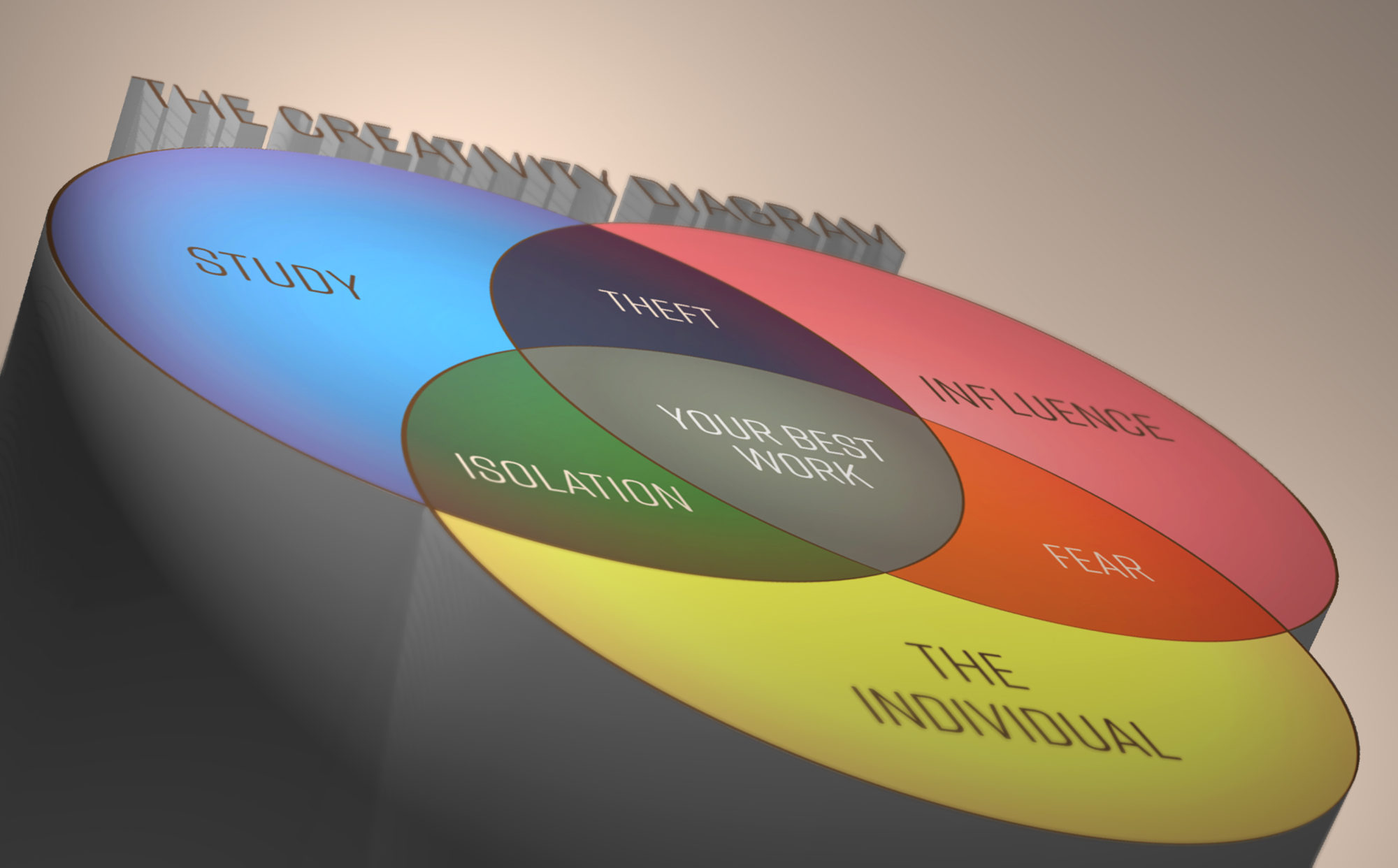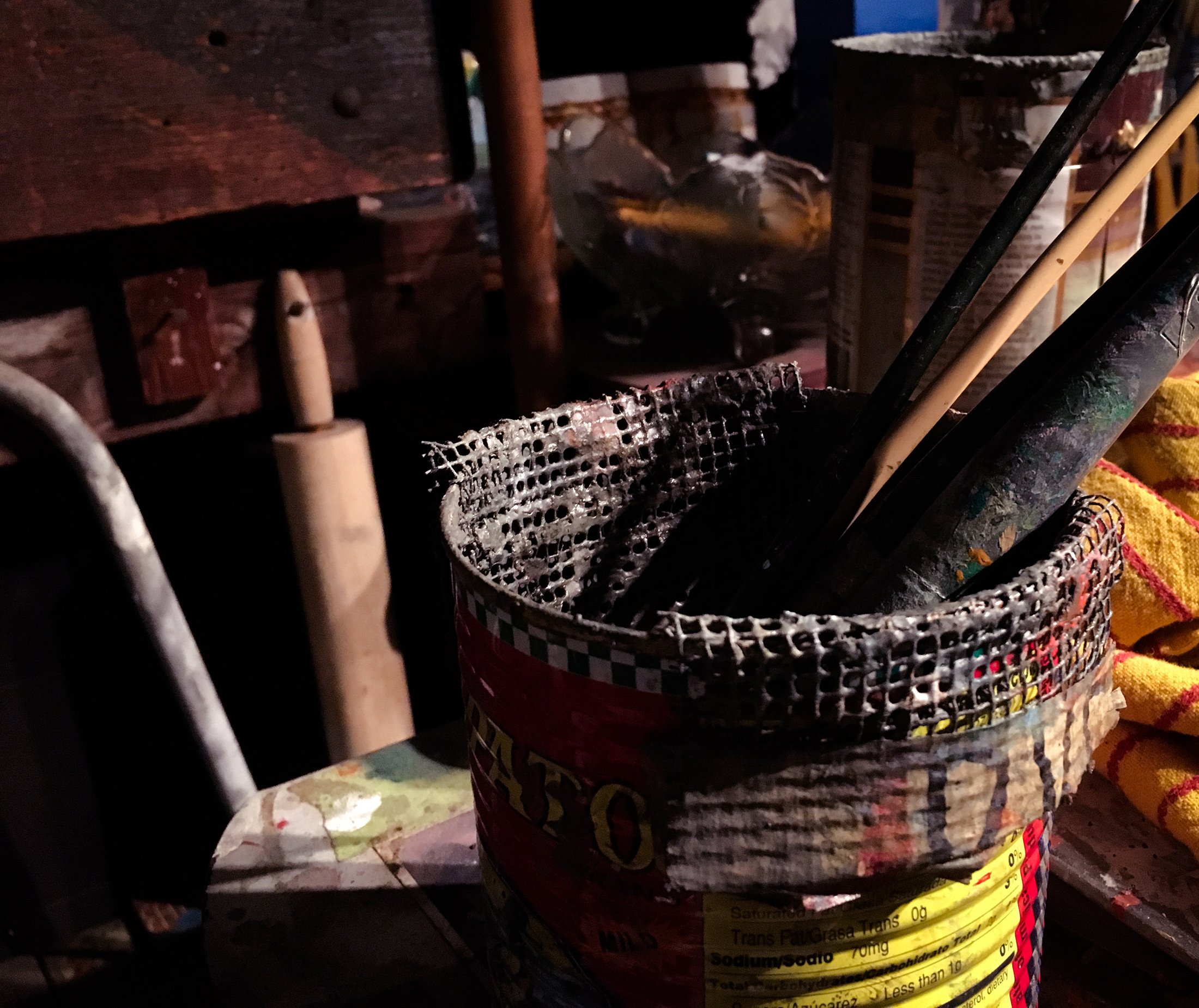When I was in college we used old coffee cans to clean our brushes. You laid a strip of screen inside, leaving an inch or two of space at the bottom, then you filled it half-way with thinner or turpentine and cleaned your brushes by scrubbing them against the screen down in the murk.
By the end of the semester the bottom of the can would fill with all the excess paint and sometimes, if you painted a lot, you’d have to pull the screen up a bit in order to get to the clean turpentine or you’d just end up scrubbing your brush in the sludge at the bottom, making your thinner all cloudy again and muddying the colors on your palette. At the end of the year, you’d pour off the turpentine, take out the screen and let the left-over sludge dry out some. Then you’d scrape it into the trash in order to start over.
I loved that sludge, the color and consistency. It was an even, cool, greenish-grey like moss (at least mine was) and if you spread it out, there would occasionally be veins of color, like the strata of the Earth, all stripes and dinosaur bones and the history of the paintings you’d done laying there in the sediment of the colors you mixed. The consistency was soft, almost buttery, and it was great to paint and draw with. All the binder in the original paint had been stripped out, so it would dry dull and flat. If you kept a little on your palette, it could be a useful way to cohere the colors in a piece; a hue-glue and muddier, an excellent ground layer.
This sludge was a physical representation of all the beauty inherent in blending and the value found in separating something into small parts.
You can learn a lot from taking things apart.

